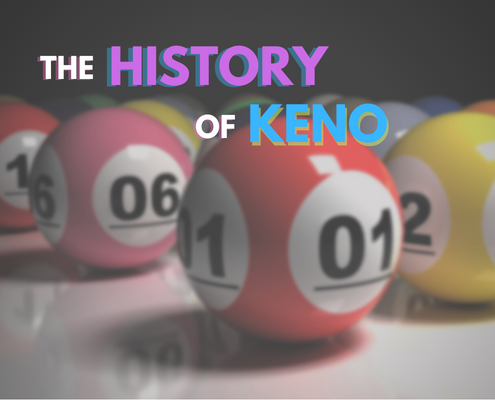The History of Keno: From Ancient China to Modern-Day Casinos
Table of Contents
The Humble Beginnings of Keno
The game of Keno, also known as “baige piao,” which means “white pigeon ticket,” in China, was first played during the Han Dynasty (206 B.C.E to 220 C.E) as a way to raise funds for the government. The game was played by writing numbers on white pigeon tickets and choosing them randomly as a form of lottery. The game was used to finance the construction of the Great Wall of China, and to support the military campaigns of the Han emperors.
During the Tang Dynasty (618-907 C.E), the game evolved, and the Chinese characters were replaced with numbers, and it became more of a game of chance. In this era, the game became more popular among the common people and spread throughout the empire.
From China To Las Vegas
Keno made its way to America through Chinese immigrants who came to the US during the 19th century to work on the transcontinental railroad. These immigrants brought the game with them, and it quickly became popular among the Chinese communities in San Francisco and other western cities. It was often played in Chinese-owned businesses such as laundries, restaurants, and boarding houses.
In the early 20th century, Keno began to be played in commercial casinos. It was particularly popular in Las Vegas, where it was used as a way to attract tourists and generate revenue for the casinos. The casinos were looking for ways to increase their revenue, and Keno was a perfect fit as it could generate large amounts of money quickly.
The introduction of electronic Keno machines in the 1970s made the game even more popular, as they allowed for faster play and larger payouts. This led to the game being widely adopted in casinos around the world. Electronic keno machines made it possible for players to select numbers and receive results instantly, which increased the game’s popularity.
How Keno Has Moved With The Times
In recent years, the game has also become popular in the online gambling world. Online casinos have added keno to their list of games, which has made it accessible to players from all over the world. The game can now be played from the comfort of one’s home, and players can choose from a wide range of variations, such as multi-race keno, progressive jackpot keno, and live dealer keno.
Keno’s ability to survive and adapt to different social eras is a testament to its popularity and appeal as a game of chance. The game has been able to adapt and evolve over time, while still retaining its core mechanics and appealing to players.
One of the key factors that has contributed to Keno’s survival is its flexibility. The game can be played in different settings and under different circumstances, which has allowed it to adapt to changing social and economic conditions. In ancient China, it was used as a way to raise money for the government and military campaigns. During the 19th and early 20th centuries, it was played in Chinese-owned businesses in the US, and then later in commercial casinos. Today, it can be played in land-based casinos, online casinos, and even on mobile devices.
Why Is Keno Still Popular Today?
Another factor that has contributed to Keno’s survival is its simplicity. The game is easy to learn and understand, and it does not require any special skills or knowledge to play. This has made it appealing to players of all ages and backgrounds. The game’s simplicity also allows for fast play and large payouts, which is a key factor in its popularity.
Keno’s ability to generate large amounts of revenue for the casinos has also been a major factor in its survival. Casinos have found the game to be a reliable source of income, and have been willing to invest in the development of new technologies and variations of the game. This has allowed the game to evolve and adapt to changing market conditions.
The introduction of electronic Keno machines in the 1970s was a turning point for the game. Electronic machines allowed for faster play, larger payouts, and the ability to play multiple games at once. This made the game more appealing to players and led to a surge in popularity.
Finally, the rise of online gambling has also played a role in Keno’s survival. Online casinos have made the game accessible to players from all over the world, and have introduced new variations of the game, such as multi-race keno, progressive jackpot keno, and live dealer keno. This has helped to keep the game fresh and exciting for players.
Conclusion
In conclusion, Keno’s ability to survive and adapt to different social era changes is a result of its flexibility, simplicity, and ability to generate revenue for the casinos. Its ability to adapt to new technologies and market conditions has helped it remain popular and relevant over the centuries.
Overall, Keno has come a long way since its inception in ancient China. From being a government-run game used to raise funds for military campaigns and the construction of the Great Wall, to a popular casino game played by millions of people around the world, Keno has stood the test of time and has proven to be a resilient and adaptable game




